As parents or caregivers, ensuring the active physical development of our babies and toddlers is a crucial endeavor.
Toys play a pivotal role in this process, and among them, balls stand out due to their multifaceted benefits.
They are one of my favorite toys because they are so versatile and it is something that your child will love even when they get older.
Giving balls can make a great gift that will last throughout the years as well.
They stimulate motor skills, hand-eye coordination, and even cognitive development.
In this post, we will guide you through the top balls to get your little ones that not only entertain but also contribute to the physical and cognitive development of your active babies and toddlers.
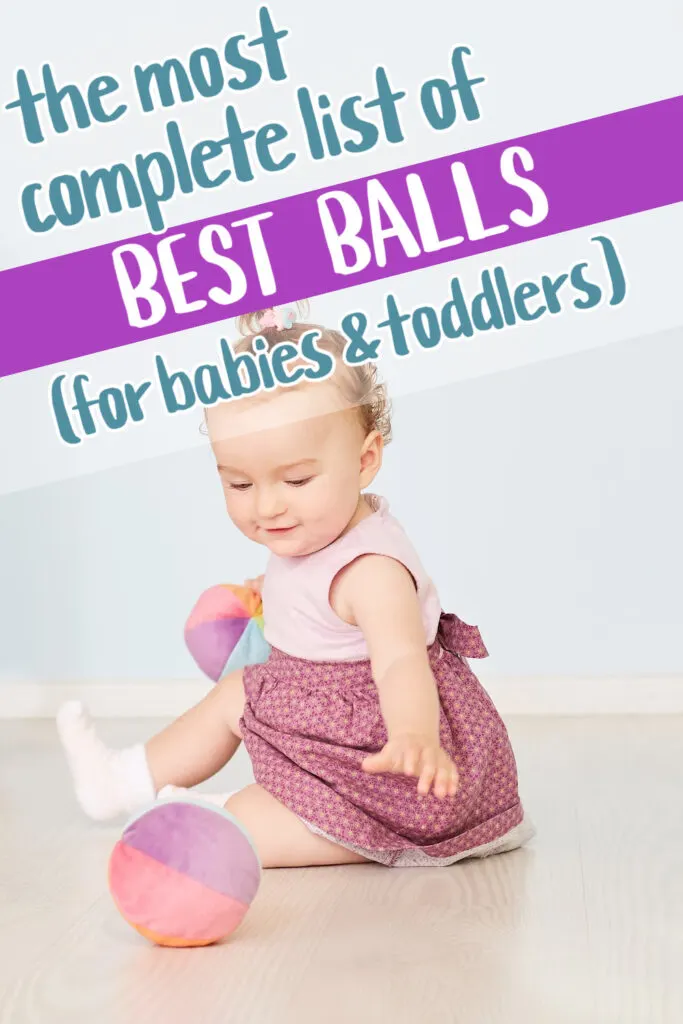
(This post may contain affiliate links. To read our full disclosure policy click here.)
Ball play is an excellent tool for enhancing gross motor skills, fine motor skills, in babies and toddlers.
When your child catches, tosses, or kicks a ball, they are learning to control and coordinate their body movements.
Hand-eye coordination specifically is improved as your child learns to track the ball with their eyes and then coordinate their hands and body to catch, throw, or strike it.
This may seem simple, but it’s a complex process that requires concentration and coordination of multiple motor skills.
Additionally, manipulating the ball—grasping it, turning it over in their hands, or passing it from one hand to another—also aids in developing dexterity and strength in their hands and fingers, which are essential for fine motor skills development.
Encouraging Social Skills from an Early Age Through Ball Play
Ball play also offers an invaluable opportunity for young children to develop social skills.
The nature of many ball games involves turn-taking, which is fundamental to effective social interaction.
When children play ball games with their peers or family members, they learn the important concept of waiting their turn and respecting others’ turns.
This not only fosters patience but also cultivates empathy as children begin to understand how others must feel while waiting.
In addition, they learn to communicate effectively, negotiate rules, and cooperate toward a common goal.
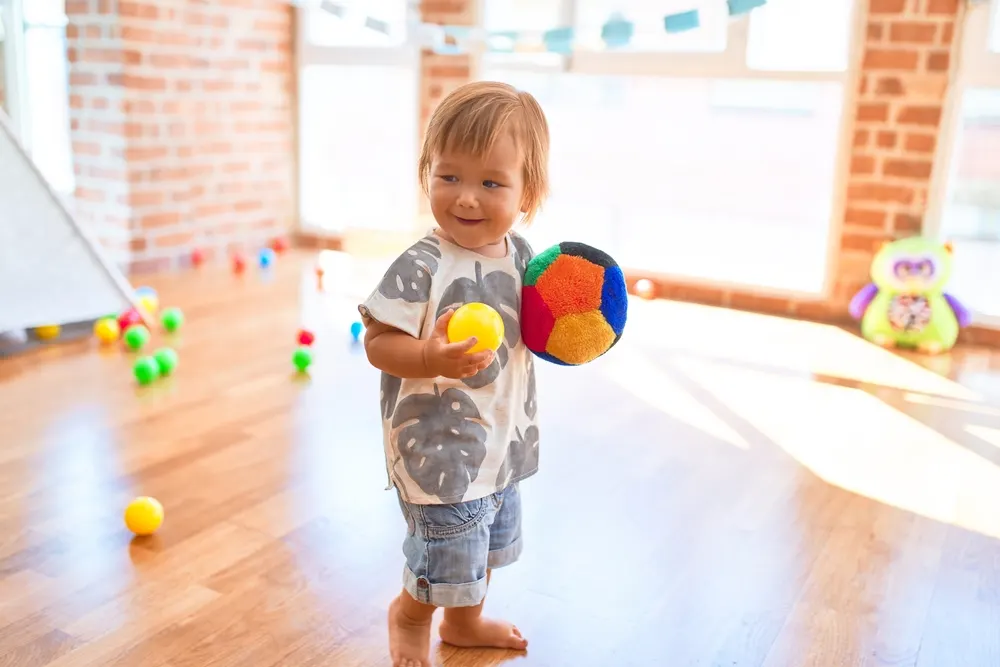
Encourage Problem-Solving Skills with Ball Play
Ball play is a fantastic tool for fostering problem-solving skills in children from an early age.
When engaging in ball games, children often encounter situations where they must strategize and make quick decisions.
For instance, judging the speed and direction of a rolling ball to catch it accurately requires quick thinking and decision-making.
Similarly, determining the force required to throw a ball to a certain distance or devising strategies to score in a group game like soccer, aids in developing critical thinking skills.
In essence, ball play provides a fun and active platform for children to apply and develop their problem-solving skills, which are key for their cognitive development.
Best Ball Toys for Young Babies
Choosing the right ball for your young baby primarily depends on the age, developmental stage, and individual interests of your child.
- Safety: First and foremost, the ball should be safe for a baby to play with. It should be large enough to avoid being a choking hazard and made from non-toxic materials.
- Size and Texture: For young babies, balls should be small enough for their little hands to grasp. Texture plays a crucial role as well; balls with different surface textures stimulate sensory development and enhance grip.
- Color and Pattern: Balls with vibrant colors or those with high-contrast patterns can help stimulate a baby’s vision and hold their interest which makes them an excellent choice.
- Sound: Balls that make noise when moved can be particularly appealing for young babies. The sounds engage their auditory senses and encourage them to explore cause and effect.
- Bounciness: Lastly, consider the ball’s bounciness. For young babies, it is advisable to start with balls that are not overly bouncy to avoid frustration and to ensure safety.
Each child is unique and so is their preference for infant toys. Experiment with different types and observe which one your baby seems to enjoy most.
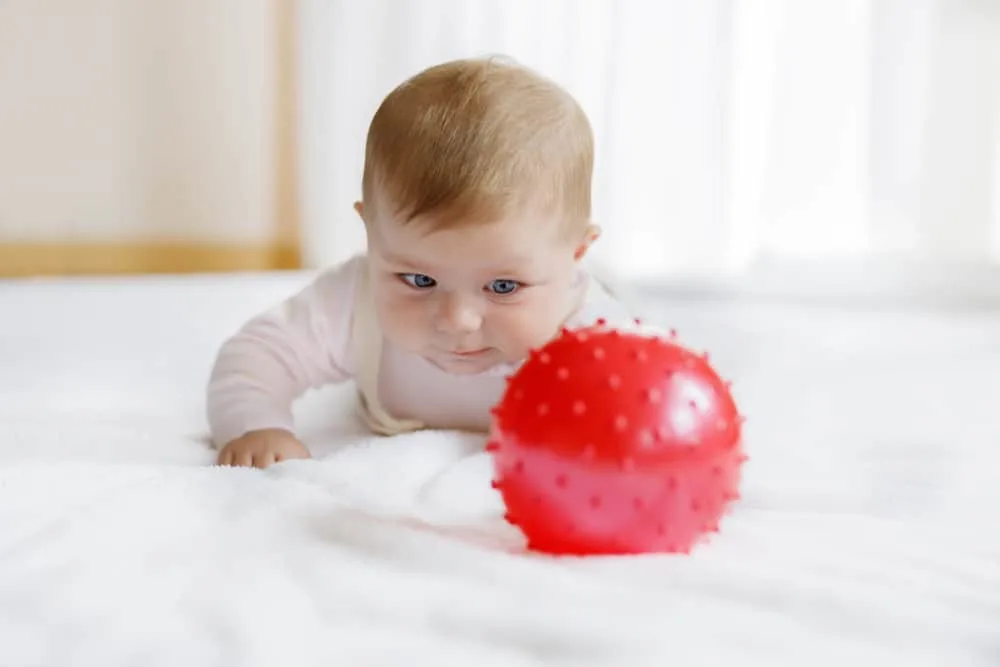
Top Choice Balls for Tummy Time
Best Balls for Tummy Time
Tummy time is a critical activity to strengthen your baby’s neck, back, and shoulder muscles.
The right ball can turn this important exercise into an engaging baby activity. Here are our top picks:
- Sensory Ball Set: These balls with varied textures can provide sensory stimulation for your baby, encouraging them to reach out and explore during tummy time. You can see the set here.
- Oball: The Oball is a classic toy for babies (see it here). Its unique design with holes and flexible material makes it easy for little ones to grasp and manipulate making it perfect for tummy time playtime. This is one of my favorites as a parent and therapist.
- Rainmaker Ball: This is another version of the Oball that I absolutely love because of the visual and sound elements. It would be a great option for tummy time because you could entertain your baby by gently shaking it or slowly rolling it across their field of vision. You can take a closer look at it here.
- Soft Balls: I love this soft knobby ball that has lots of interesting things for your baby to look at and touch. The ball has lots of different colors including black and white which is great for little babies as their vision is still coming in. You can look at it here.
Although these balls are great for babies, your little one may still enjoy them into the toddler years.
Let’s talk about some fun activities we can do as your little one gets older.
Best Ball Activities for Toddlers
Have you noticed your toddler throwing everything?
Even more than just balls?
Toddlers are just starting to learn about their environment and how they can interact with it.
They want to explore, move their bodies, and throw objects.
So why not give them a few fun activities that will help develop their gross motor skills?
Here are some great ball activities for toddlers:
Rolling or Throwing the Ball Back and Forth
Engaging in social play through rolling or throwing a ball back and forth presents a fantastic opportunity to promote both physical and social development in toddlers.
This simple activity not only enhances their gross motor skills but also encourages the development of crucial social competencies.
When toddlers roll or throw a ball back and forth with a caregiver or a peer, they learn about taking turns and sharing, which are fundamental to effective social interactions.
This activity further fosters effective communication as it gives you the opportunity to practice new words such as “ready, set, go!” or “my turn!”
Moreover, rolling or throwing a ball back and forth can stimulate a toddler’s problem-solving skills.
They learn to anticipate the ball’s trajectory and speed, decide when and how to catch or throw the ball, and strategize to maintain the game.
In essence, the seemingly simple activity of rolling or throwing a ball back and forth is a powerful tool for promoting social, cognitive, and physical development in toddlers.
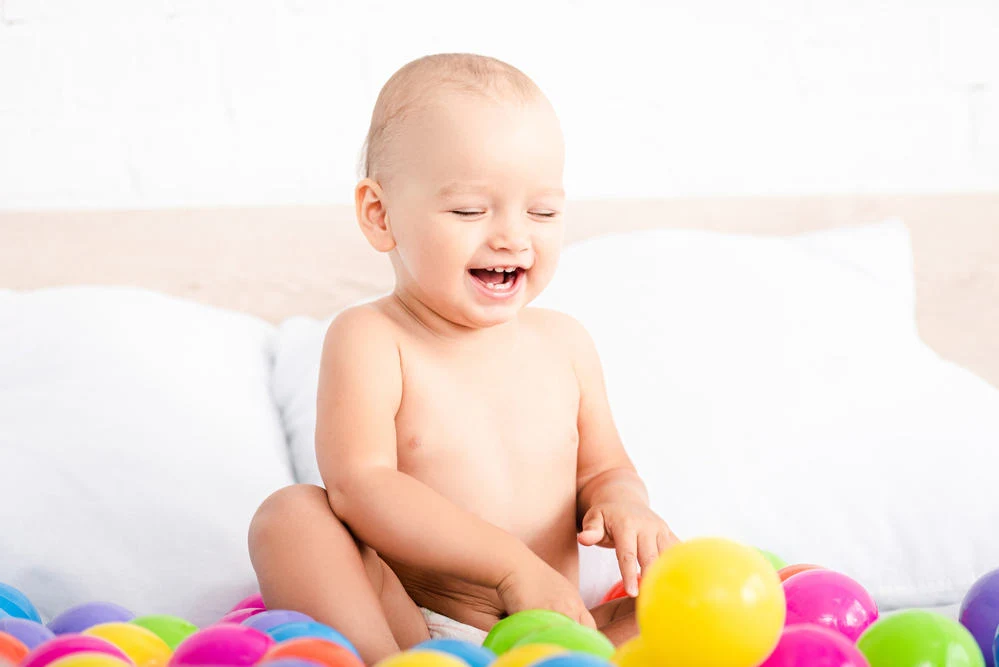
Using a Toddler Ball Pit for Sensory Exploration and Pretend Play
One of the toys that we have gotten the most play out of in the younger years that my kids still love as older children (5 and 7) is a ball pit.
Adding a kids’ ball pit to your living room can present an immersive sensory exploration and pretend play experience for toddlers.
In terms of pretend play, a ball pit enables a plethora of imaginative scenarios.
My kids loved to make up different scenarios like they were fish swimming in water or they would take boxes and fill them with different colored balls to pretend they had a store.
Such dramatic play fosters a child’s creativity, social skills, and language development.
Remember, ensuring safety is paramount when setting up a ball pit at home.
Make sure the ball pit balls are made of non-toxic material, large enough to avoid choking hazards, and there’s adequate padding around the pit to prevent injuries.
With the right precautions, a toddler ball pit can turn your living room into a wonderland of sensory and imaginative play.
Best Balls for Sensory Stimulation
Utilizing balls with varied textures (like these) can be a great activity for your child to get sensory input.
Each distinctly textured ball offers a unique tactile experience, enabling their little hands to explore and understand the diversity of touch sensations.
For instance, a soft plush ball may provide a comforting, soothing texture, while a rubber ball with raised bumps might offer a more stimulating, intriguing feel.
Engaging with these different textures can be a great sensory playtime experience for toddlers.
Fun Outdoor balls
Outdoor play is vital for a toddler’s development, and sports balls can be a great way to facilitate this.
A simple soccer ball or basketball can introduce a toddler to a world of physical activities, encouraging them to run, kick, throw, and catch, and make great outdoor toys for toddlers.
This not only enhances their gross motor skills but also fosters coordination and balance.
Additionally, sports balls provide an opportunity for toddlers to learn about teamwork and cooperation when playing in groups.

Set up a Mini Soccer Game
Setting up a mini game of soccer for your toddler is a fantastic way to engage them in physical activity while also teaching them the basics of a popular sport.
Begin by defining a small playing area in your backyard or a nearby park.
Use cones or other safe, visible objects to mark the boundaries of a soccer goal.
Choose a small, toddler-appropriate soccer ball that’s light enough for them to kick but large enough to not pose a choking hazard.
Encourage your toddler to kick the ball towards the goal and celebrate when they succeed, fostering a positive association with the game and physical activity.
As your toddler advances, consider introducing basic rules, such as not using their hands.
Ensuring the game remains fun and pressure-free is crucial at this stage; the primary goals are to promote physical activity, coordination, and a love for sports.
Balls are some of the Best Toys for Young Children
In conclusion, balls are indeed a great toy and beneficial for young children.
They offer lots of different ways to stimulate and support their holistic development.
Interactive games with balls help enhance critical gross motor skills, coordination, and physical fitness.
Simultaneously, they foster cognitive abilities, such as problem-solving and strategic thinking.
Ball play also encourages social interaction, teaching children important concepts like sharing, taking turns, and effective communication.
Sensory balls provide a unique opportunity for tactile exploration, contributing to their sensory development.
In essence, introducing your child to ball games and activities is not just about fun—it’s a significant step towards their overall growth and development.
So, let’s roll the ball and kick-start their learning journey!
Frequently Asked Questions
Yes, a ball pit is great for toddlers aged 2 and above. It provides them with a fun and stimulating environment to explore their senses and engage in pretend play. Just make sure you supervise your toddler when playing in the ball pit to ensure safety.
Balls can have a great impact on the development of toddlers, both physically and mentally. Through playing with balls, a toddler can build gross motor skills, hone cognitive abilities such as problem-solving and strategic thinking, and learn important social concepts like sharing and taking turns. Moreover, sensory balls offer unique opportunities for tactile exploration which contributes to their sensory development.
Balls can be incredibly stimulating and engaging for toddlers. Most balls are colorful, inviting, bouncy, and tactile – all of which appeal to a young child’s developing senses. Additionally, the fact that they can do so much with them (e.g., roll them, throw them, kick them) makes balls highly desirable for kids of this age.
Related Posts You Will Enjoy
The Best Ideas to Entertain Your Busy Toddler at Home
Do Time-Outs Work? What are the Best Alternatives?
The Complete Guide to Using the Honey Bear Straw Cup with Your Child
Why is my toddler waking up so early?
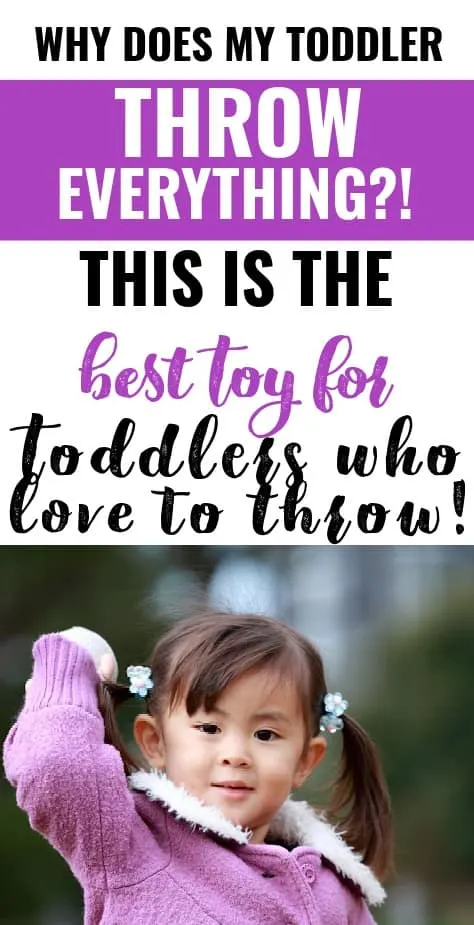

Kayla O’Neill has a master’s degree in education as well as a bachelor’s degree in special education with an emphasis in early childhood education. She has been working as a developmental therapist with babies and toddlers in early intervention since 2012. She is also a mom with two young children.